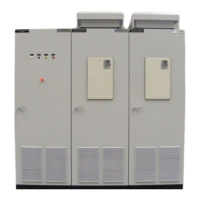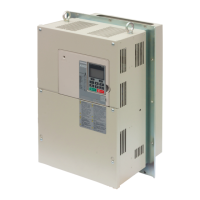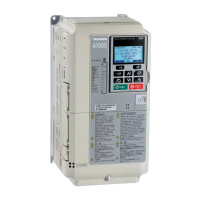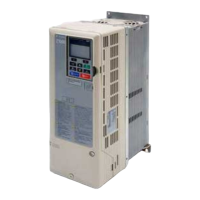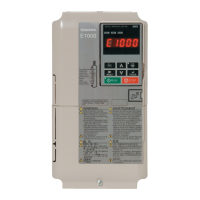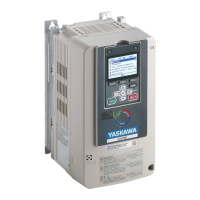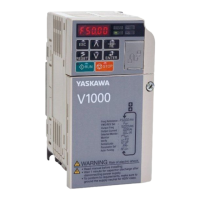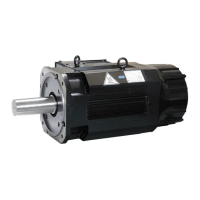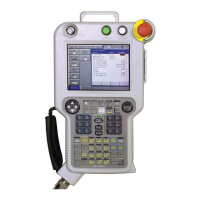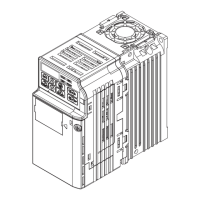6.10 Troubleshooting without Fault Display
YASKAWA ELECTRIC SIEP C710616 27G YASKAWA AC Drive A1000 Technical Manual 373
PID Output Fault
Insufficient Starting Torque
Motor Rotates After the Drive Output is Shut Off (Motor Rotates During DC Injection
Braking)
Output Frequency is not as High as Frequency Reference
Buzzing Sound from Motor at 2 kHz
Cause Possible Solutions
No PID feedback input.
• Check the multi-function analog input terminal settings.
• Set multi-function analog input terminal A1, A2, or A3 for PID feedback (H3-02, H3-10, or H3-06 = “B”).
• A signal input to the terminal selection for PID feedback is needed.
• Check the connection of the feedback signal.
• Check the various PID-related parameter settings.
• No PID feedback input to the terminal causes the value detected to be 0, causing a PID fault and the drive to operate
at max frequency.
The level of detection and the target value do not correspond with
each other.
• PID control keeps the difference between target and detection values at 0. Set the input level for the values relative to
one another.
• Use analog input gains H3-03 and H3-11 to adjust PID target and feedback signal scaling.
Reverse drive output frequency and speed detection. When output
frequency rises, the sensor detects a speed decrease.
Set PID output for reverse characteristics (b5-09 = 1).
Adjustment made to PID parameter settings are insufficient. Refer to b5: PID Control on page 167 for details.
Cause Possible Solutions
Auto-Tuning has not yet been performed (required for vector
control modes).
Perform Auto-Tuning. Refer to Motor Performance Fine-Tuning on page 326.
The control mode was changed after performing Auto-Tuning. Perform Auto-Tuning again.
Only Stationary Auto-Tuning was performed. Perform Rotational Auto-Tuning.
Cause Possible Solutions
DC Injection Braking is set too low and the drive cannot decelerate
properly.
• Adjust the DC Injection braking settings.
• Increase the current level for DC Injection Braking (b2-02).
• Increase the DC Injection Braking time at stop (b2-04).
The stopping method is set so that the drive coasts to stop. Set b1-03 (Stopping Method Selection) to 0 or 2.
Cause Possible Solutions
Frequency reference is set within the range of the Jump frequency.
• Adjust the parameters used for the Jump frequency function (d3-01, d3-02, d3-03).
• Enabling the Jump frequency prevents the drive from outputting the frequencies specified in the Jump range.
Upper limit for the frequency reference has been exceeded.
• Set the maximum output frequency and the upper limit for the frequency reference to more appropriate values
(E1-04, d2-01).
• The following calculation yields the upper value for the output frequency = E1-04 d2-01 / 100
Large load triggered Stall Prevention function during acceleration.
• Reduce the load.
• Adjust the Stall Prevention level during acceleration (L3-02).
Motor runs at following speed.
b2-01 Motor speed < E1-09
Set b1-21 (Start Condition Selection at Closed Loop Vector Control) to 1.
Set E1-09 (Minimum Output Frequency) to a value lower than the setting for b2-01 (DC Injection Braking Start
Frequency).
Cause Possible Solutions
Exceeded 110% of the rated output current of the drive while
operating at low speeds.
• If the output current rises too high at low speeds, the carrier frequency is automatically reduced and causes a whining
or buzzing sound.
• If the sound is coming from the motor, disable carrier frequency derating (L8-38 = 0).
• Disabling the automatic carrier frequency derating increases the chances of an overload fault (oL2). Switch to a larger
capacity motor if oL2 faults occur too frequently.
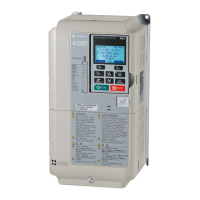
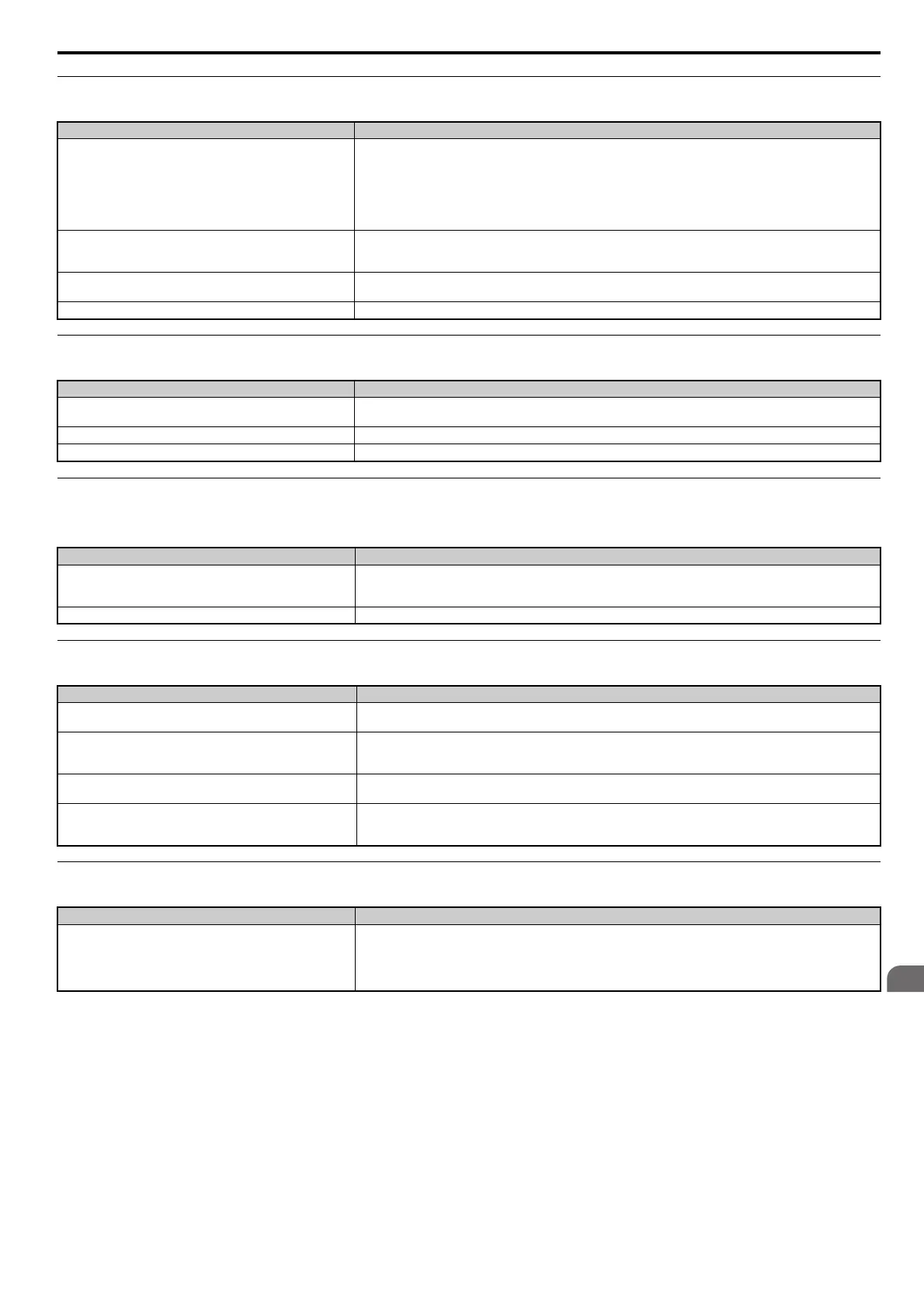